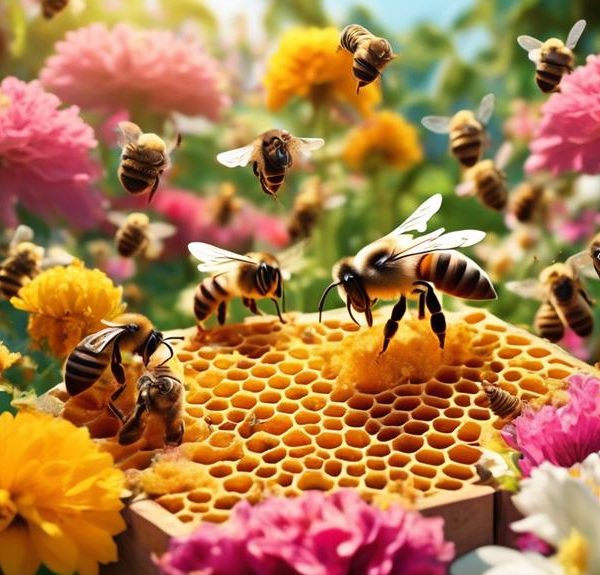Yes, bees can bite you, but it's more complex than you think; delve into the intriguing specifics of bee behavior and their unique anatomy.
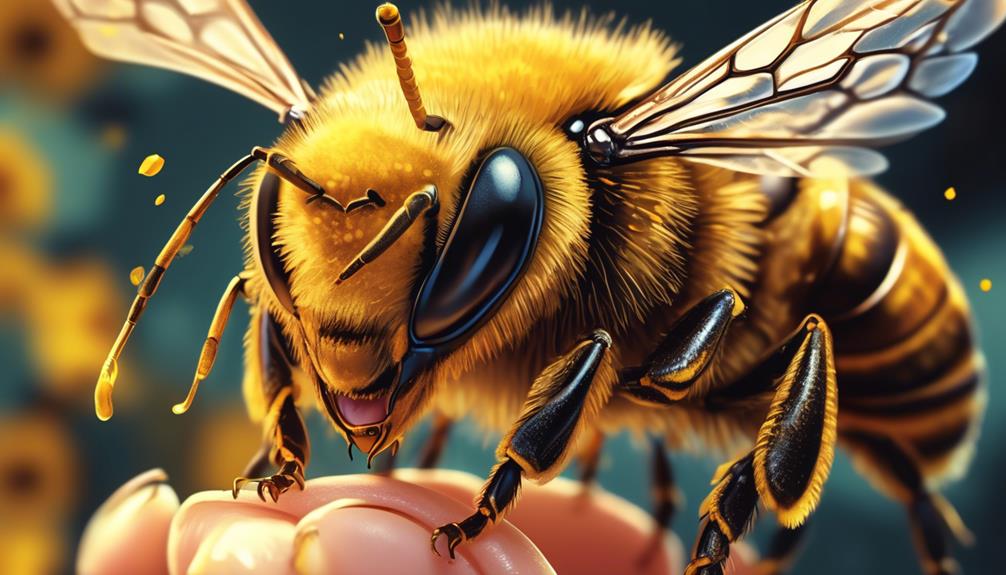
Can Bees Bite You?
You've probably heard the saying, 'as busy as a bee,' but have you ever paused to consider just how much a bee's industrious nature can affect you?
Specifically, can these buzzing creatures actually bite you? While you're familiar with the sting of a bee, the notion of a bee bite might seem like uncharted territory. It's not as straightforward as you might think, with factors like bee species and their unique anatomy playing key roles.
Stick around, you're on the precipice of a fascinating exploration into the lesser-known aspects of bee behavior.
Key Takeaways
- Bees do not bite, but they sting using their modified ovipositors.
- Bee stings can cause immediate effects such as pain, swelling, and itching, as well as potential long-term effects like scarring and tissue damage.
- Severe allergic reactions, including anaphylaxis, can occur after a bee sting and require immediate medical attention.
- Proper treatment of a bee sting involves removing the stinger quickly, applying a cold compress, using pain relievers and antihistamines, and seeking medical help for allergic individuals.
Understanding Bee Anatomy
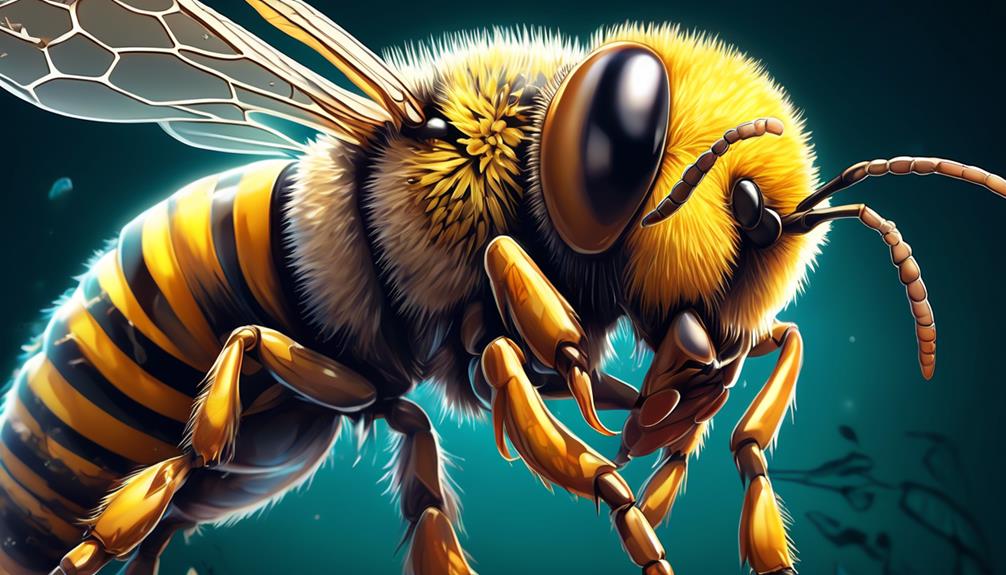
To fully grasp the potential for bees to bite, you'll need a deep dive into their intricate anatomy. Bees, like other insects, have a body divided into three segments: the head, thorax, and abdomen. But what's most interesting is their head, where their mouthparts reside.
Most bees, including the honey bee, possess mandibles – jaw-like structures that they use to bite. They're not just for defense, though. Bees also use their mandibles to shape wax, carry debris, and feed their young. Yet, it's worth noting that a bee's bite isn't its primary weapon. Its stinger, located at the end of its abdomen, is far more feared.
The bee's mouthparts also consist of a proboscis, a long, flexible tongue-like structure. This allows them to suck up nectar from flowers, their main food source. It's the proboscis you often see dipping into flowers, not a stinger or mandibles.
Differences Between Bees and Other Insects
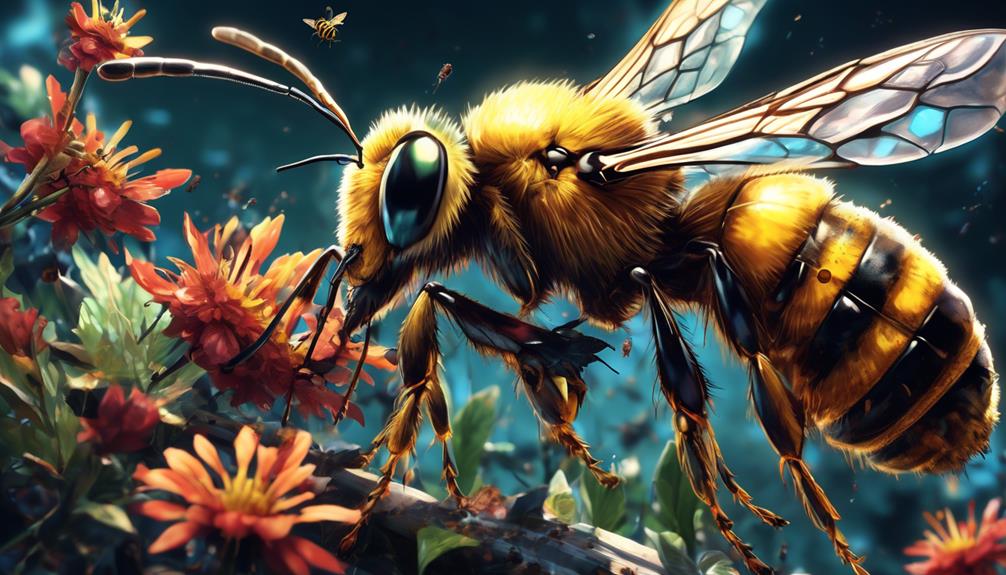
Diving into the world of bees and their insect counterparts, you'll notice stark differences that set these buzzing creatures apart. Unlike most insects, bees have a specialized diet, primarily consuming nectar and pollen from flowering plants. This dietary choice has led to the evolution of their complex social structures, something not found in many other insects.
Bees, unlike flies or mosquitoes, possess two pairs of wings. The front and rear wings lock together when the bee is flying and separate when it's at rest. This unique feature enhances their flight stability. In contrast, flies have only one pair of wings, and mosquitoes have a pair of wings and a pair of halteres, which are tiny knobbed structures that aid in flight stability.
The stinger, a modified ovipositor, distinguishes bees from most other insects. While wasps and some ants also have stingers, bees are unique in that female worker bees' stingers are barbed, causing them to remain lodged in the skin of an enemy, ultimately leading to the bee's death.
Despite these differences, all insects, including bees, share a common body structure: a head, thorax, and abdomen, with six legs. However, it's the subtle variations in these structures that set bees apart.
The Science Behind Bee Bites
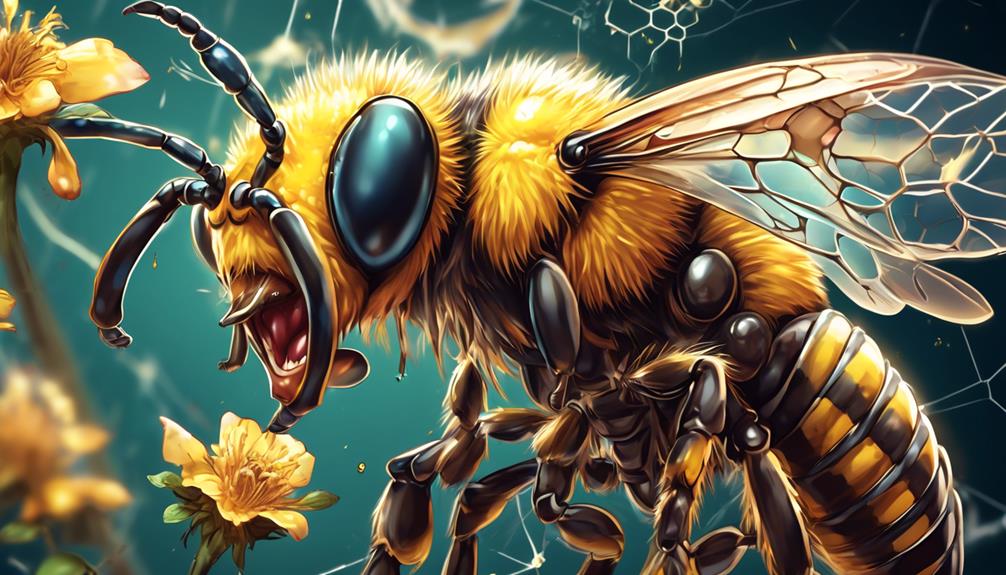
While understanding the unique anatomy of bees gives us insight into their distinct behaviors, it's equally intriguing to explore the science behind bee bites. Unlike other insects, bees don't really bite; they sting. Their stingers are modified ovipositors, egg-laying organs, which have evolved into venom-delivering tools.
You might wonder why bees evolved this way. The answer lies in their social structure. Worker bees, the ones you're most likely to encounter, are female but can't reproduce. They exist to protect the hive. If you're perceived as a threat, they're biologically programmed to defend their colony, even at the cost of their own lives.
When a bee stings you, it's not simply piercing your skin; it's a complex process. The bee's stinger is barbed, designed to remain lodged in your skin. As the bee pulls away, it leaves behind not only the stinger, but also a venom sac and a portion of its digestive tract. This is why a bee sting is a suicide mission for the bee.
The venom itself is a cocktail of proteins and peptides, which cause pain and inflammation. It's fascinating, albeit somewhat painful, science.
Implications of a Bee Bite

Understanding the implications of a bee sting, it's crucial to know the immediate and potential long-term effects on your health. Immediately after a bee sting, you'll likely experience pain, swelling, and redness at the sting site. More severe reactions can include anaphylaxis, a life-threatening allergic reaction that requires immediate medical attention.
To better visualize the implications, consider the following table:
Immediate Effects | Possible Long-Term Effects | Treatment |
|---|---|---|
Pain | Allergic Reaction | Clean the area |
Swelling | Anaphylaxis | Apply cold compress |
Redness | Scarring | Use pain relievers |
Itching | Tissue Damage | Allergy medication |
Hives | Psychological Impact | Medical care if severe |
While most of these effects are temporary, some could lead to long-term health problems, particularly if you're allergic to bee venom. Scarring and tissue damage can occur if the sting isn't properly treated. Furthermore, the psychological impact, including fear and anxiety, should not be underestimated. So, always take a bee sting seriously. And remember, if you're stung and experience difficulty breathing, hives, or swelling of the face, throat, or mouth, seek medical help immediately. It might be a sign of anaphylaxis, a severe allergic reaction.
Prevention and Treatment Methods
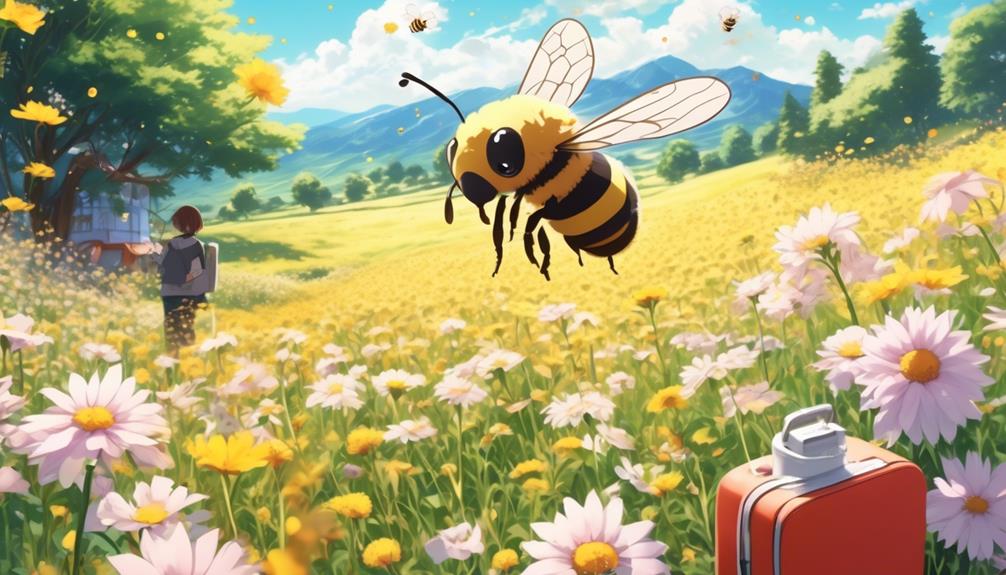
To protect yourself from bee stings and effectively manage their aftermath, it's essential to be well-informed about prevention strategies and treatment methods. You can decrease the likelihood of being stung by avoiding bright colors and floral prints that attract bees. When outdoors, especially in areas where bees are known to congregate, use caution when consuming sweet beverages which can also attract these insects.
If you're stung, immediate treatment is key. Initially, you should remove the stinger as quickly as possible. Contrary to popular belief, the method of removal doesn't significantly affect the amount of venom released. It's the speed of removal that's crucial.
Next, apply a cold compress to the stung area to reduce swelling. Over-the-counter pain relievers can help with pain management, and antihistamines can control swelling and itching. If you're allergic to bees, carry an epinephrine auto-injector (EpiPen) and administer it promptly after a sting. If you experience symptoms like difficulty breathing or feeling faint, seek immediate medical attention.
Understanding these prevention and treatment strategies can help you handle potential bee encounters with confidence and ensure your safety.
Frequently Asked Questions
How Long Does It Take for a Bee to Recover After Biting or Stinging?
After a bee stings, it doesn't recover because it dies. When a bee stings, its stinger, attached to its digestive system, gets ripped out, resulting in its death.
However, not all bees die after stinging. Queen bees and male bees are examples of bees that don't die after stinging. This is because their stingers aren't barbed and can be retracted.
It's important to note that bees don't bite; they sting.
Are There Any Specific Weather Conditions That Make Bees More Likely to Bite?
Yes, certain weather conditions can increase bees' aggression. Cool, overcast days can make bees more defensive. They're also more likely to act aggressively during periods of nectar shortage, as resources become scarce.
When it's windy, bees can't hear or smell as well, which can make them more likely to sting. So, if you're out and about in these conditions, it's best to give bees a wide berth to avoid unwanted attention.
Can Bees Bite Other Insects or Animals, or Only Humans?
Yes, bees can bite other insects and animals, not just humans. They're equipped with mandibles, which they use primarily for handling food, building their hive, and grooming. However, when threatened, they can use these mandibles defensively to bite.
It's important to remember though, their primary defense is their stinger, which they'll use before resorting to biting.
What Are Some Common Misconceptions About Bees and Their Ability to Bite?
You might've heard some misconceptions about bees' biting abilities. Many believe bees can't bite at all, only sting. That's not entirely accurate.
While it's true that bees are more known for their stinging, they can indeed bite. They mainly use their mandibles to manipulate their environment or handle food. However, it's their sting you should worry about, not the bite, as the bite isn't usually harmful to humans.
How Does the Bee Population in an Area Affect the Likelihood of Getting Bitten?
The bee population in an area doesn't directly increase your chances of getting bitten. Bees are typically non-aggressive and won't bite unless provoked. However, a higher bee population may increase your exposure to bees, and thus, the likelihood of accidental provocation.
Conclusion
In conclusion, bees can't technically bite you, but they can sting. They're equipped with a stinger for self-defense which releases venom into your system.
However, not all bees are the same, and some species may cause more harm than others. It's crucial to take preventative measures and know the appropriate care steps if you're stung.
Remember, bees play a vital role in our ecosystem – they'd rather pollinate than pick a fight with you.

